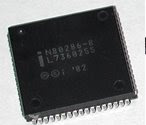What is a network card?
A network card (also called a Network Adapter or Network Interface Card, or NIC for short) acts as the interface between a computer and a network cable. The purpose of the network card is to prepare, send, and control data on the network.
A network card usually has two indicator lights (LED's):

* The green LED shows that the card is receiving electricity;
* The orange (10 Mb/s) or red (100 Mb/s) LED indicates network activity (sending or receiving data).
To prepare data to be sent the network card uses a transceiver, which transforms parallel data into serial data. Each cart has a unique address, called a MAC address, assigned by the card's manufacturer, which lets it be uniquely identified among all the network cards in the world.
Network cards have settings which can be configured. Among them are hardware interrupts (IRQ), the I/O address and the memory address (DMA).
To ensure that the computer and network are compatible, the card must be suitable for the computer's data bus architecture, and have the appropriate type of socket for the cable. Each card is designed to work with a certain kind of cable. Some cards include multiple interface connectors (which can be configured using jumpers, DIP switches, or software). The most commonly used are RJ-45 connectors.
Note: Certain proprietary network topologies which use twisted pair cables employ RJ-11 connectors. These topologies are sometimes called "pre-10BaseT ".
Finally, to ensure that the computer and network are compatible, the card must by compatible with the computer's internal structure (data bus architecture) and have a connector suitable for the kind of cabling used.
A network card (also called a Network Adapter or Network Interface Card, or NIC for short) acts as the interface between a computer and a network cable. The purpose of the network card is to prepare, send, and control data on the network.
A network card usually has two indicator lights (LED's):

* The green LED shows that the card is receiving electricity;
* The orange (10 Mb/s) or red (100 Mb/s) LED indicates network activity (sending or receiving data).
To prepare data to be sent the network card uses a transceiver, which transforms parallel data into serial data. Each cart has a unique address, called a MAC address, assigned by the card's manufacturer, which lets it be uniquely identified among all the network cards in the world.
Network cards have settings which can be configured. Among them are hardware interrupts (IRQ), the I/O address and the memory address (DMA).
To ensure that the computer and network are compatible, the card must be suitable for the computer's data bus architecture, and have the appropriate type of socket for the cable. Each card is designed to work with a certain kind of cable. Some cards include multiple interface connectors (which can be configured using jumpers, DIP switches, or software). The most commonly used are RJ-45 connectors.
Note: Certain proprietary network topologies which use twisted pair cables employ RJ-11 connectors. These topologies are sometimes called "pre-10BaseT ".
Finally, to ensure that the computer and network are compatible, the card must by compatible with the computer's internal structure (data bus architecture) and have a connector suitable for the kind of cabling used.





